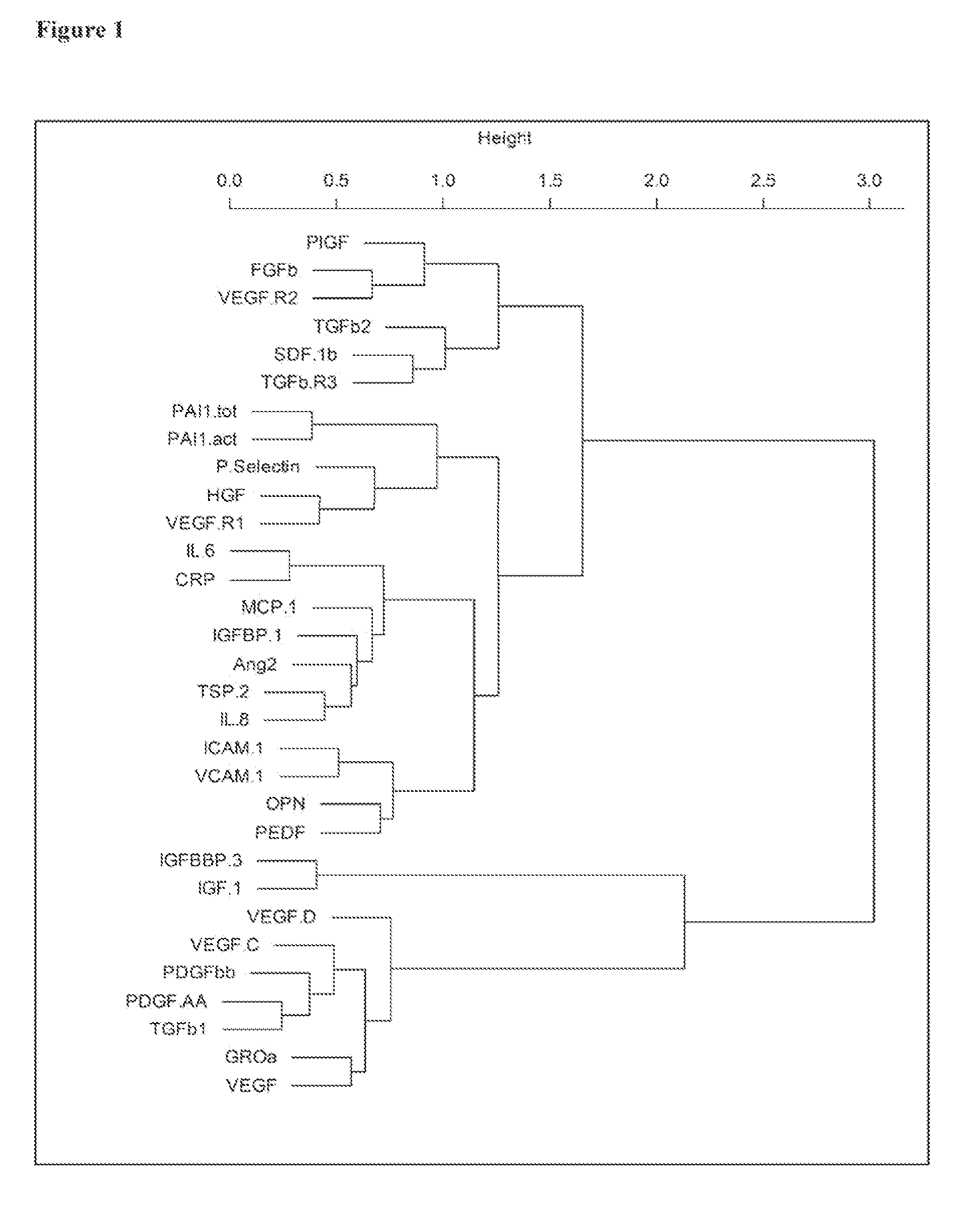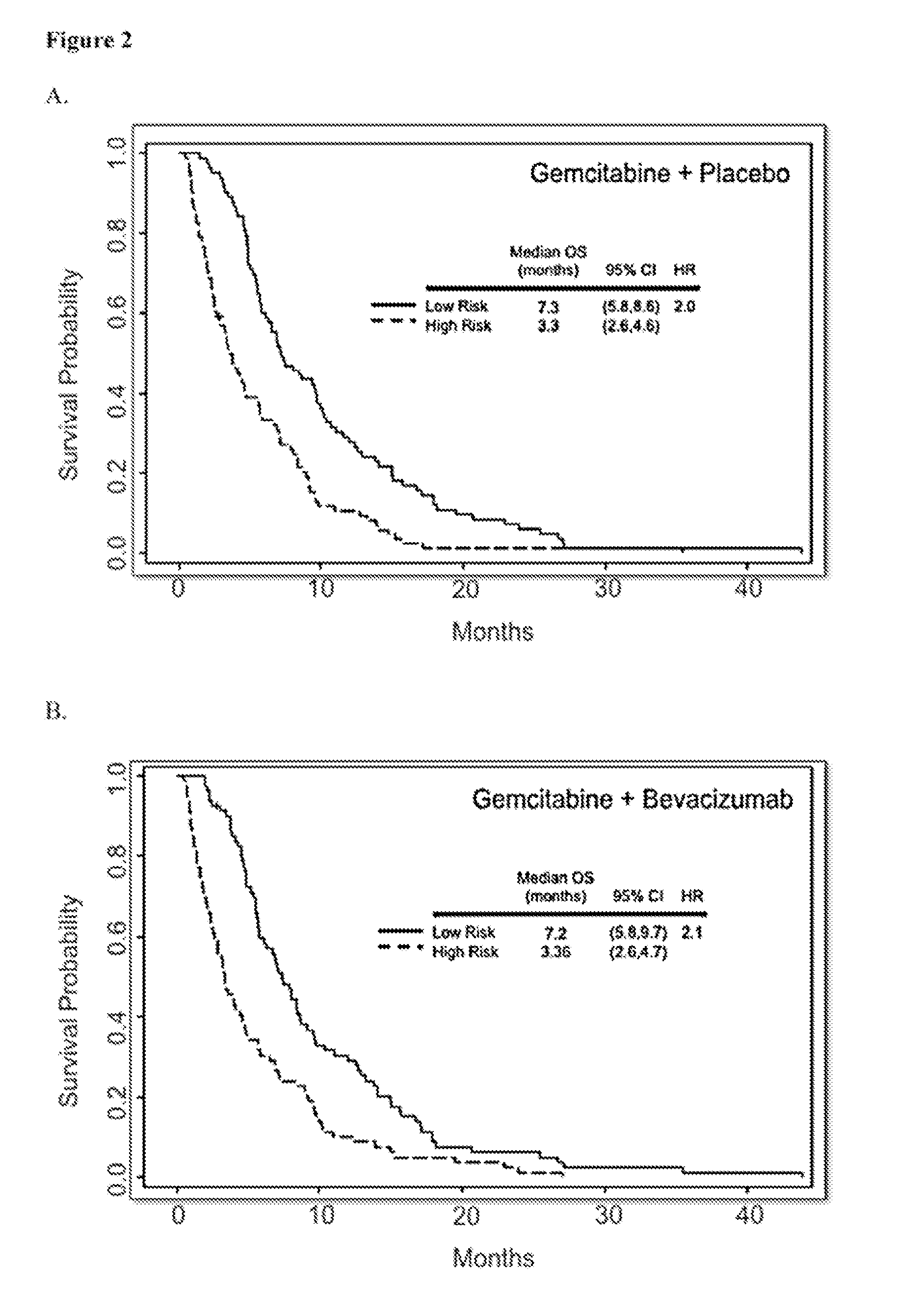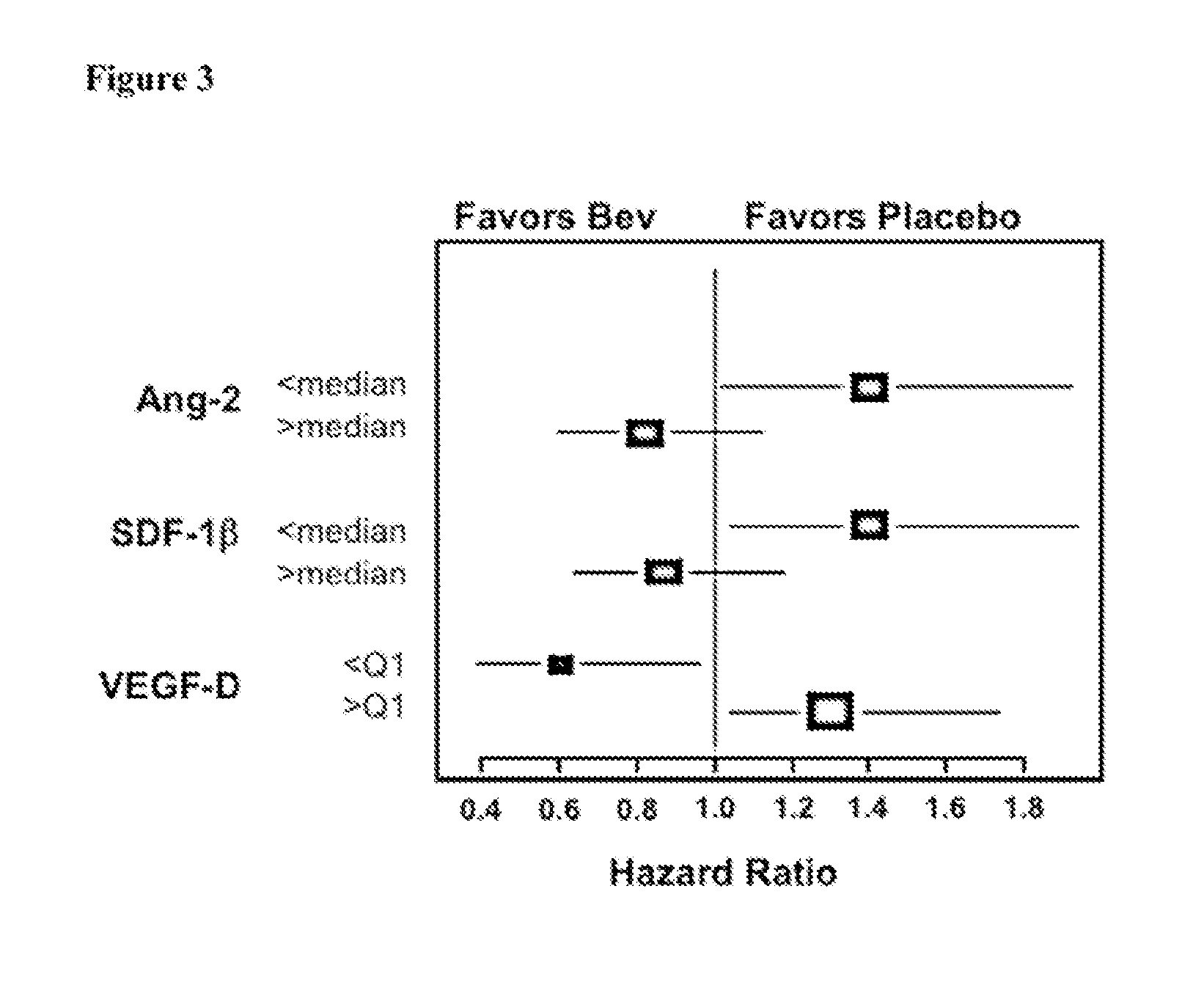Methods of developing a prognosis for pancreatic cancer and predicting responsiveness to cancer therapeutics
a pancreatic cancer and prognosis technology, applied in the field of pancreatic cancer prognosis and predicting responsiveness to cancer therapeutics, can solve the problems of difficult identification of such biomarkers, unable to reliably derived information from large randomized trials, and elusive markers that predict which patients will derive greater or lesser benefit from anti-vegf therapy
- Summary
- Abstract
- Description
- Claims
- Application Information
AI Technical Summary
Benefits of technology
Problems solved by technology
Method used
Image
Examples
examples
Materials and Methods
Patients:
[0057]Eligibility of patients evaluated in this correlative analysis was described previously (Kindler et al., J Clin Oncol 2010 28(22):3617-3622). Briefly, eligible patients had histologically- or cytologically-confirmed pancreatic adenocarcinoma not amenable to curative surgery. Measurable disease was not required. Prior chemotherapy for metastatic disease was not permitted. Adjuvant chemotherapy was allowed if it did not contain gemcitabine or bevacizumab, if it was given more than 4 weeks before enrollment, and if the patient had subsequent disease progression. Prior radiation was allowed if it was completed at least 4 weeks prior to enrollment and there was disease outside the radiation port. Patients were required to be at least 18 years of age and have a life expectancy of at least 12 weeks. Written informed consent was obtained from all patients participating in tins correlative analysis. Table 2 provides the demographic information for the pati...
PUM
 Login to View More
Login to View More Abstract
Description
Claims
Application Information
 Login to View More
Login to View More - R&D
- Intellectual Property
- Life Sciences
- Materials
- Tech Scout
- Unparalleled Data Quality
- Higher Quality Content
- 60% Fewer Hallucinations
Browse by: Latest US Patents, China's latest patents, Technical Efficacy Thesaurus, Application Domain, Technology Topic, Popular Technical Reports.
© 2025 PatSnap. All rights reserved.Legal|Privacy policy|Modern Slavery Act Transparency Statement|Sitemap|About US| Contact US: help@patsnap.com



